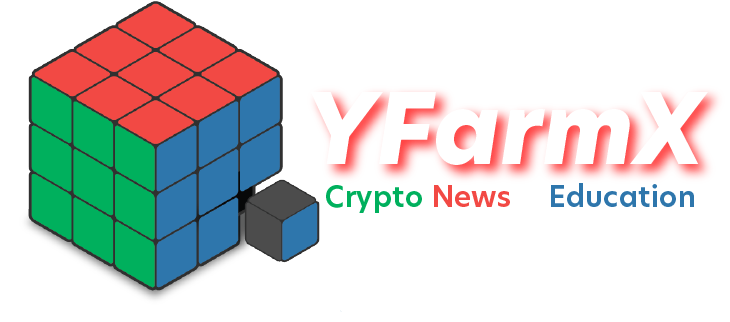Flare Network’s Head of Marketing Nick Campion speaks to YFarmX about Flare’s technology and innovative work.
1. Could you briefly describe the Flare Network, how it’s different from other blockchains and some of the technologies that underpin it?
Flare is a powerful new blockchain built for universal connectivity. The vision is to unite the decentralized economy so that it can genuinely scale. Just like you need trade between countries for the global economy to grow, you need interoperability between different blockchains to allow for more specialization and growth. Flare is not about replacing other blockchains, it’s about catalyzing blockchain’s growth as a whole. The way Flare can help is by providing new and more secure solutions to the cross-chain interoperability issues that have long frustrated the industry. We want to see assets, information and liquidity able to flow freely and securely between all chains, and ultimately, from Web2 to Web3 too. The thing that really sets Flare apart is its decentralized data and interoperability infrastructure built natively into the blockchain. Combine this with our substantial decentralized network of independent data providers who are incentivized to provide accurate data and the result is a powerful substrate for developers to create the next generation of decentralized businesses:
- The first consensus protocol purpose built for external blockchain data, which can prove whether a transaction has happened on a different blockchain back to applications on Flare.
- A decentralized oracle providing rapidly updating cryptocurrency price data to the network.

2. With the audit now successfully complete and the Flare Network’s mainnet launch just around the corner, can you tell us a bit about the journey the organisation has had up to this point? Was there anything particularly challenging? Were there any moments that stood out?
The Flare journey started when the three founders, Hugo, Sean & Naïri, met while studying Machine Learning at University College London. From the beginning, their shared ambition was to deliver real utility and solve the problems they perceived were holding back the industry. Initially this meant opening the door to DeFi for the 70% of value of all blockchain tokens which lack smart contract functionality. Since then, Flare’s ambition has grown substantially to solving interoperability and bridging more generally. This is the Flare we are launching, with the State Connector and Flare Time Series Oracle already providing native decentralized blockchain state and price data acquisition to the network.
The next big steps on the roadmap will be the subsequent launch of FAssets and LayerCake. FAssets will bring smart contracts to tokens that don’t have them, enabling them to participate in DeFi and be bridged to other chains. LayerCake will provide fast, decentralized, reorganization resistant and fully-insured multilateral bridges between smart-contract chains – allowing people to bridge their assets with confidence again.
Flare has always been committed to achieving this vision without sacrificing decentralization or security. The fundamental principles of blockchain are there for a reason, and by adhering to them as closely as possible, we feel our end product is so much stronger. There is a trade-off when launching new technology, balancing the desire to get to market as quickly as possible whilst taking the time to comprehensively battle-test. With the benefit of hindsight, I still think it was the correct decision to take a slightly more conservative approach to make sure people’s assets are as safe as possible once the network is live.

The launch of Songbird, the canary network for Flare, was a big moment in our development, and has taught us a huge amount. The most important lesson we learned was discovering the potential of the Flare Time Series Oracle Data Providers, hence why they are now also involved as validators for Flare supporting our meritocratic consensus.
3. Flare prides itself on being built for cross-chain. In what ways can using Flare lead to a better user experience using new cross-chain and bridging technologies?
As we’ve seen too many times in recent months, a lack of decentralization can lead to a significantly increased risk of theft, fraud and censorship in cross-chain protocols. Billions of dollars have been taken from blockchain bridges because they are often more centralized and less secure than the blockchains they serve. Too much trust needs to be placed in the hands of the parties operating the bridges, and time and again this has proven to be ill-advised.
Even with the signatories doing their best to do the right thing, the risk of simple human error makes multisigs too vulnerable to be holding such enormous value. The potential rewards are so high that the social engineering attacks will likely become even more elaborate and hard to avoid. I’m sure there are many people out there who could have fallen for the attack that compromised the Ronin bridge. The hackers interviewed the Axie engineer multiple times for a job *that didn’t exist* before sending him a job offer pdf containing malicious code.
Flare’s commitment to delivering cross-chain interoperability in a truly decentralized fashion is what sets us apart and will help keep people’s money safe. The State Connector is the first consensus protocol purpose built for external blockchain data. It can prove the state of another blockchain in a decentralized manner, making it more secure and robust than existing approaches. Combine this with the Flare Time Series Oracle which delivers rapidly updating decentralized cryptocurrency price data to the network, and builders have easy native access to both price and state, opening up a world of potential cross-chain utility.

The end game, as with any technology, is invisibility. For mass adoption the benefits of blockchain will need to be hidden behind clear and intuitive UI/UX. The State Connector and particularly Flare’s bridging application, LayerCake, can work exactly like this, enabling secure bridging between any smart contract chain or metaverse, and creating a generally more simple and seamless user experience for cross-chain applications.
4. DeFi has introduced a huge amount of innovation in the space and has economically empowered many individuals around the world. With that though, there has been a substantial risk from hackers and exploits. How does Flare protect its DeFi users from such risks?
By committing to decentralization in all core protocols, refusing to make technology compromises that could affect security, and undertaking multiple audits on all aspects of our codebase, Flare is ensuring that all the building blocks are as robust as possible. The incorporation of native interoperability protocols and bridging applications within the Flare blockchain also helps reduce potential attack vectors for applications built on the network.
5. We recently heard about your partnership with Algorand to help develop critical DeFi infrastructure. Could you talk a bit more about what this partnership entails and your relationship with that team?
We have been awarded a seven figure grant to build a Bitcoin bridge to the Algorand ecosystem. This bridge will power secure trustless interoperability between the two chains, using similar technology to Flare’s FAsset application which will enable non-smart contract tokens to bridge onto Flare where they can participate in DeFi, NFTs, metaverses and more.

That means that once the Algorand bridge is up and running, there will be the option to extend it to other non-smart contract tokens, such as DOGE, LTC and XRP. These non-smart contract tokens account for two-thirds of the value of all crypto assets, so mobilizing and activating their liquidity for Defi is huge
6. What is Flare’s relationship with regulators and what is the organisation’s view of the current regulatory landscape?
We take regulation seriously and have a full-time legal department advising us on our compliance requirements. We are committed to decentralization because we believe in the fundamental blockchain ideals, but the regulatory environment is an extra motivating factor in ensuring the network is properly decentralized before any tokens are distributed to the public.
7. What are some of the most innovative and creative projects that are being built on Flare? Will NFT’s and DAO’s play an important role in the ecosystem?
The Flare Time Series Oracle and the State Connector are new and exciting technologies which enable trustless interoperability with blockchains and real world data sources. What people can build using these building blocks is only really limited by their imaginations. Initially we expect they will be used to develop better solutions for existing Web3 interoperability challenges, and better, more secure bridging is one obvious huge contribution that Flare will bring to the space.
People have said blockchain is a solution looking for a problem, I don’t believe that, it’s just early in its life cycle, and by its nature as a means of investment available to anyone with a computer, it is probably much more globally visible than previous infrastructure technologies were at an equivalent stage of their life.

Flare will have all types of project taking advantage of the native interoperability tech and playing an important role in the ecosystem. That will certainly include all types of DeFi, NFT, DAO and metaverse projects.
8. Flare’s Genesis was on July 14th and I believe you are now in something called Observation Mode. Could you explain what this is and why it’s important?
The objective is decentralization in order to maximize security before initiating one of the largest ever airdrops in cryptocurrency history. Observation Mode is a period of at least 8 weeks, during which time Flare will become sufficiently decentralized such that the Flare Foundation controls no more than 33% of the network validation power. Once we reach this threshold, Observation Mode will be complete, and public token distribution can begin. We are anticipating this to happen at some point in September.
Visit Flare’s website: www.flare.xyz



